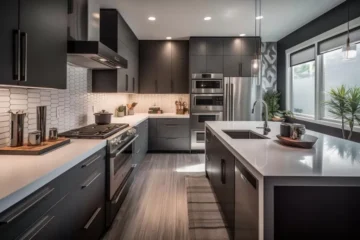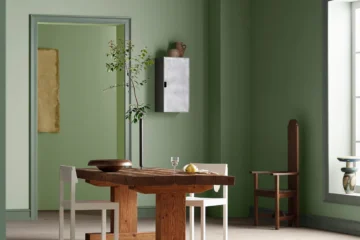Enhancing the comfort and appeal of a home is a common goal for many property owners, yet managing to do so without incurring excessive costs is an art in itself. Careful planning, savvy shopping, and strategic decision-making are vital. Whether it’s by upgrading a kitchen, landscaping the garden, or simply giving the walls a fresh coat of paint, home improvements can significantly increase the value of a property when done correctly. Critical to this process is using deals and offers, such as coupons for home improvement retailers, which can stretch your dollar further.
Plan Your Project with Cost-Effectiveness in Mind
When contemplating home improvements, outlining the project’s scope stands as the initial crucial task. It involves delineating the necessary actions and, potentially more vital, what can be postponed. Dividing the project into manageable segments enables prioritization based on urgency and financial constraints, ensuring primary aspects receive attention. Material expenses can be substantial, prompting exploration of alternative options that deliver comparable aesthetics or functionalities at reduced costs, yielding significant savings. Thorough budgeting entails research and comparison shopping, serving as your financial guide, and influencing every decision during the renovation process. Additionally, seeking out coupons can further enhance cost-effectiveness.
DIY vs. Professional Help: Making the Right Choice
Home improvement television shows have popularized the DIY movement, inspiring viewers to take on new projects. While a sense of satisfaction comes with completing a project with your own hands, it’s vital to understand your limits. Realizing your skills can save you from costly mistakes in the long run. Simple cosmetic updates might be within your wheelhouse, but hiring a professional may be the safest and most cost-effective approach for tasks requiring a skilled hand or specialized knowledge, such as installing new plumbing or rewiring electrical systems. Remember, the upfront cost of hiring a qualified tradesperson can be far less than the price of correcting a DIY gone wrong.
Finding Deals and Discounts on Home Improvement Supplies
Sourcing materials and supplies for a home upgrade doesn’t have to break the bank. Look for local sales, sign up for newsletters from home improvement stores to get the first word on discounts, or consider purchasing from overstock websites. Strategic timing can lead to substantial savings; for instance, purchasing lumber during winter could be less expensive than in peak construction season. An extra tip from sources like Consumer Reports is not open to negotiating with suppliers. Asking for a discount, especially on large orders, can often lead to unexpected savings.
Energy-Efficient Updates That Pay Off in the Long Run
Home improvements are an opportune time to incorporate energy-efficient solutions to benefit the environment and your wallet. Small changes, such as sealing draughts around doors and windows or installing programmable thermostats, can have immediate returns on investment. Consider the long-term financial benefits of installing solar panels or high-efficiency heating and cooling systems for more substantial renovations. Investigating local energy programs can sometimes result in rebates or tax credits, effectively reducing the initial expenditures of such upgrades. Over time, these energy-efficient installations contribute to a more sustainable home and can significantly lower monthly utility bills.
Repurposing and Upcycling in Home Renovation
Repurposing and upcycling go beyond mere cost savings; they bring an element of history and story into your home. That old dresser gathering dust in the attic? It could be transformed into a chic bathroom vanity. A collection of mismatched tiles can become the centerpiece of a unique mosaic backsplash in the kitchen. Scouring architectural salvage shops, flea markets, or online marketplaces for materials is economical and cultivates a unique aesthetic. Every repurposed item can serve as a conversation starter and a testament to your ingenuity and creativity in home design.
Navigating Building Permits and Codes on a Budget
Renovations, while personal to your home, still fall under the purview of local government regulations. Underestimating the importance of building permits and code adherence can lead to expensive corrections, including teardowns or fines. Although obtaining permits can sometimes seem daunting and costly, it’s necessary to ensure the legality and safety of your improvements. By engaging with local building officials early on and understanding the exact requirements, you can factor these costs into your budget effectively, avoiding any unpleasant surprises that may happen during inspections.
Maintaining Quality While Cutting Costs
Being budget-friendly can mean high quality. The mark of a significant renovation is its ability to stand the test of time. Investing in high-use areas, such as flooring or kitchen appliances, can lead to more substantial savings in the long term as you’ll avoid the need for frequent repairs or replacements. In every project, there’s a balance to strike between initial cost savings and the long-term durability of the materials and artistry you choose. Opting for quality where it matters most is an investment that often pays dividends in durability, aesthetics, and overall satisfaction.
Leveraging Technology to Design and Visualize Projects
In this digital age, homeowners have many technological resources to help plan renovations. Various apps and software programs allow you to design your space, experiment with different styles, and visualize the result without spending a penny on materials. These tools can prevent costly miscalculations and help refine your vision before the physical work begins. References like The New York Times suggest several popular digital tools that can assist in this process, giving homeowners the confidence that their envisioned improvements are aesthetically pleasing and functionally sound.
Avoiding Common Financial Pitfalls in Home Improvements
Financial overextension is a prevalent pitfall in home improvements. Unexpected costs, whether from unforeseen repairs or impulse upgrades, can swiftly deplete your budget. To guard against this, ensure that your budget includes a line item for contingencies—typically around 10-20% of the total project cost. This safety net gives you flexibility and peace of mind throughout the renovation. By researching and understanding common budgeting errors, you can plan proactively, making well-informed decisions that steer clear of financial missteps.
To conclude, a beautifully revamped home does not need to cause financial strain. You can achieve the aesthetic and practical updates you desire by leveraging coupons, investing in energy efficiency, repurposing materials, and using digital tools to plan effectively. Careful budgeting, timing, and knowing when to hire professionals rather than DIY all contribute to a more cost-effective home improvement experience. With thoughtfulness and strategic planning at the forefront, your home improvement project can be both a rewarding venture and a wise financial investment.




